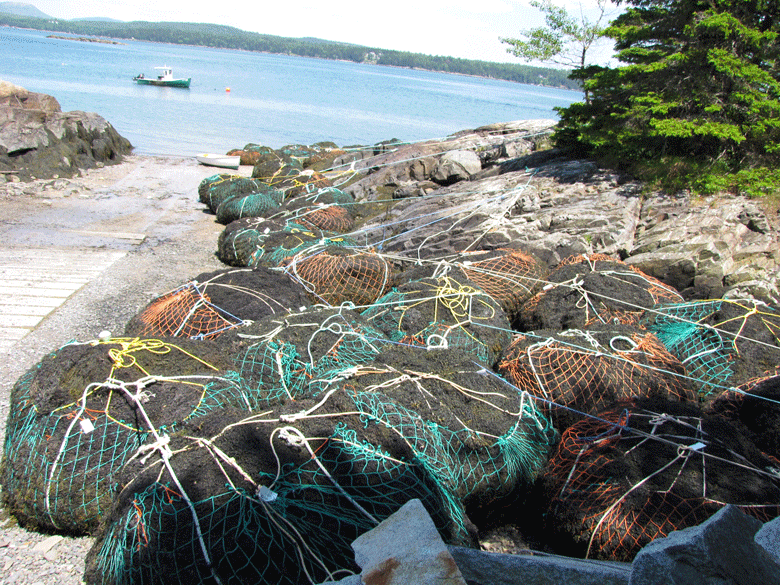On a recent Wednesday morning, a small group of volunteers walked the shoreline in Lamoine with buckets, mesh bags, large square plastic picture frames, and fish-weighing scales. Carefully picking their way across the slippery seaweed, they laid out transects, and began to count and weigh the rockweed, hefting pound after pound of wet, heavy algae.
They are part of Project ASCO (Assessing Seaweed via Community Observations), a citizen science effort along the Maine coast helping answer the question, “How much rockweed is there?”
We are asking all our project colleagues to collect data from the places they love and access the most along the coast, and we are also focusing on places on the coast where researchers have come before us and weighed rockweed. The volunteers in Lamoine were returning to a site last studied by researchers in 1998. Other historical sites were studied in the 1980s and 1970s. Knowing how much rockweed exists in these locations now and comparing that to how much there was in the past can give us insight into how rockweed can contribute to the coastal blue carbon budget in Maine.
Whether rockweed is carried out to sea in storms or harvested for use on crops, we don’t know how much there is to begin with…
Rockweed is abundant along Maine’s rocky coast. As it grows it takes carbon out of the ocean. It does not store the carbon in sediment the way salt marshes do, but instead, in its branched and fleshy fronds.
When storms batter the coast, pieces of rockweed can be torn off and carried out to the ocean, where the rockweed breaks down slowly and eventually sinks to the ocean floor. Likewise, when people collect rockweed for use on agricultural landscapes, rockweed breaks down, its carbon stored in the soil.
Carbon storage is an essential way to remove carbon from the atmosphere and the oceans. The data that Project ASCO volunteers are collecting adds to the understanding of rockweed’s role in Maine’s goal of carbon neutrality by 2045.
But whether rockweed is carried out to sea in storms or harvested for use on crops, we don’t know how much there is to begin with.
And that’s why we started Project ASCO. We train people along the coast to weigh seaweed, contribute their data, and then we share data back out with everyone courtesy of the Mount Desert Island Biological Laboratory’s anecdata.org platform.
We started the training and fieldwork for the Project ASCO effort last fall, and have been to sites from Kennebunk to Acadia and have weighed over 1,100 pounds of rockweed and then returned the rockweed back to the rocks. This method is nondestructive, as we do not cut the rockweed to weigh it.
Project ASCO coordinator Maya Pelletier has found that our biggest challenge right now is identifying and working with coastal landowners to access historical study sites. We are contacting property owners to say, “This researcher from 1973 collected data right in front of your property, and we’d like to repeat their work.” Most have granted access, and a few have come into the rockweed with us!
Back in Lamoine that Wednesday morning, the citizen scientists weighed the rockweed, draped it back over the rocks, watched gulls floating on the incoming tide and snails lumber across rocks—just one of many groups and individuals giving their time and getting a little wet as they help us better understand this seaweed right outside our doors.
We hope more people will join this effort: by allowing us to access historic survey locations, by participating in one of our many training events this summer, and by collecting and sharing data from rockweed-covered shorelines around the state.
Hannah Webber is marine ecology program director with Schoodic Institute at Acadia National Park.





